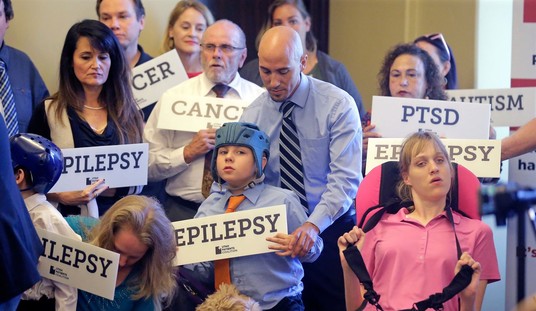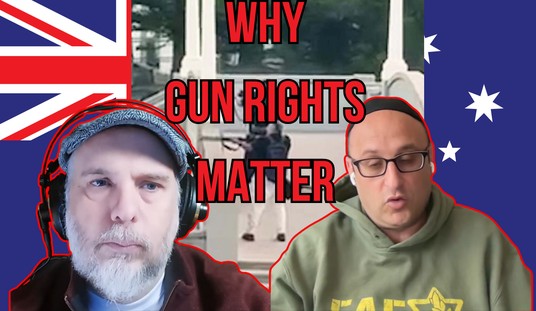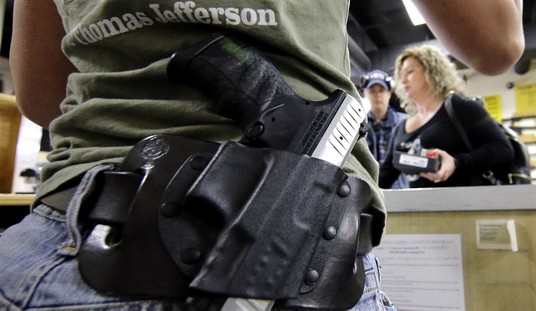In a ghoulish display of advocacy journalism, a Cleveland, Ohio television station is using the murder of a 68-year-old man to push for a "red flag" law in the Buckeye State.
Thomas Overall was shot and killed by his neighbor Bryan Hurt back in May before Hurt took his own life. In an earlier report, Channel 5 in Cleveland spoke to neighbors who described Hurt as a "presence was problematic for the last 25 years", but in their most recent coverage the television station downplayed the fact that those who lived near Hurt had previously contacted police about his behavior and were frustrated that nothing was done in favor of a narrative that nothing could have been done because of the lack of an Extreme Risk Protection Order process in the state. .
Neighbors suspected he was dangerous, but none of them knew he had a gun.
Then, on a warm spring day, police said Hurt's next door neighbor, Thomas Overall, 68, decided to cut his grass.
Neighbors said, for some reason, Hurt would often become angry when Overall mowed his lawn.
This time, Cleveland police said Hurt shot and killed his next-door neighbor, Overall, before driving to Rocky River Reservation and taking his own life:
"Something should have been done," Orlosky said. "And it wasn’t."
"It's unnerving," said Ohio Rep. Bride Rose Sweeney (D-Westlake).
Sweeney represents the West Park neighborhood where Hurt murdered Overall.
She also grew up there.
"It doesn't have to be this way," she said.
Sweeney has long supported the use of Extreme Risk Protection Orders (ERPOs), also known as "red flag laws."
It doesn't have to be this way, but we also don't need a "red flag" law in place to deal with dangerous people. Of course, Channel 5 buttressed Sweeney's support for ERPOs with a talking head from the gun control bastion known as the Johns Hopkins Bloomberg School of Public Health.
"If someone is showing signs or risk factors for suicidality or homicidality, you create some space and time between them and firearms to reduce the risk," said Spencer Cantrell, Assistant Scientist at the Johns Hopkins Bloomberg School of Public Health and Co-Lead at the National ERPO Resource Center at the Johns Hopkins Center for Gun Violence Solutions.
Cantrell said research shows red flag laws reduce suicides and homicides.
"Nationally, research shows that for every 17 to 23 ERPOS issued, one suicide is prevented,' she said. "So, we know that these are effective."
Is that really all that effective? And what happens in the other 16 to 22 cases? Did the "red flag" law fail to prevent a suicide, or were the individuals who had their guns taken away never a risk to begin with?
Those aren't hypothetical questions. Depriving someone of a fundamental constitutional right is incredibly serious, and shouldn't be done lightly. If proponents of Extreme Risk Protection Orders say they're effective less than 10 percent of the time, and maybe even less than 5 percent, I think it's fair to ask if there are more effective and more constitutionally sound ways to precent individuals from hurting themselves or others.
Ohio, like every other state in the country, already has a law allowing for involuntary commitments for those determined to pose a substantial risk of physical harm to self or others. As part of the process, the person seeking a commitment can be referred to a counselor at a community mental health center as part of the investigation process. Ohio Legal Rights Services says that "he individual is often diverted to less restrictive treatment or protective services without the filing of a formal affidavit", which "spares the individual from the involuntary civil commitment process and the inherent stigma and stress that comes with it" while still providing them access to mental health resources.
A "red flag" law, on the other hand, typically doesn't involve any kind of mental health care; either an assessment as part of the judicial determination of dangerousness or after a judge has decided someone is too dangerous to legally possess a firearm. Once the ERPO has been issued and any guns they own are seized, the state considers the problem solved.
Would have really have stopped Hurt from killing his neighbor? I don't think so. Hurt could have used any number of things as a weapon, from a butcher knife to his car. He could have even beaten Overall to death.
The television station spoke to Buckeye Firearms Association executive director Dean Rieck and highlighted his concerns about a lack of due process under "red flag" laws, but honestly, that's only one of the problems with Extreme Risk Protection Orders. Even leaving aside the constitutional concerns, there are plenty of common sense reasons why "red flag" laws are a bad idea.
News 5 also buried the fact that Hurt was a convicted felon who wasn't allowed to possess a gun in the first place. If that didn't stop him from illegally acquiring a firearm, why on earth would the reporters and the ERPO supporters they spoke to think that a "red flag" law would have been any more effective?
Even before Hurt killed Overall, those who knew him believed he was dangerous, though they had no idea he owned a gun. That's the real issue, and the "red flag law suggested by the Cleveland television station wouldn't have addressed it at all.
Editor's Note: The mainstream media continues to deflect, gaslight, spin, and lie about President Trump, his administration, and conservatives.
Help us continue to expose their left-wing bias by reading news you can trust. Join Bearing Arms VIP and use promo code FIGHT to get 60% off your membership.









